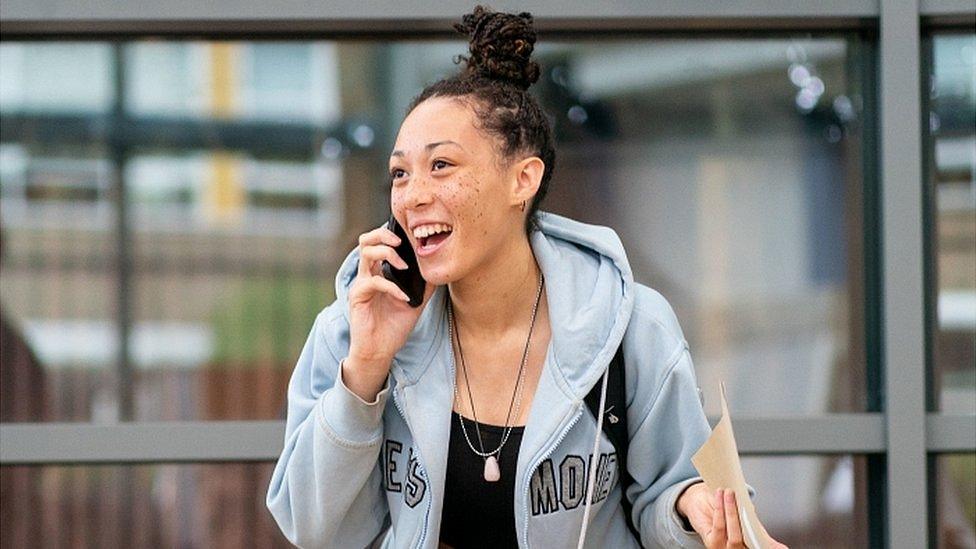Wales' GCSE gap widens for children from poorer backgrounds
- Published
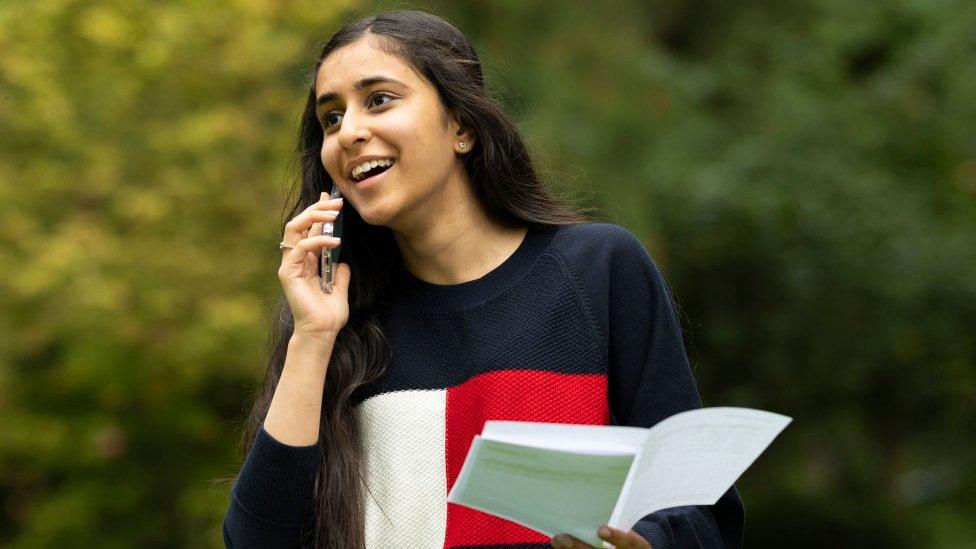
This year's results showed a sharp increase from 2019, but fewer pupils from poorer backgrounds achieved A*-C grades
There is a widening gap for top GCSE results between pupils from poorer backgrounds and others, figures show.
This year's top results showed a sharp increase from pre-Covid levels in 2019.
However, 52% of pupils who were eligible for free school meals got grades between A* and C. For those who were not eligible, it rose to 79.3%.
David Evans, Wales secretary of National Education Union (NEU) Cymru, said it showed the pandemic hit people from poorer backgrounds harder.
The gap of those getting the best grades has grown to 27.3% after narrowing slightly to 24.2% in 2020.
Mr Evans said: "Poverty has been an issue here. The pandemic hasn't hit people fairly.
"There will be children who haven't had the space to learn at home and who haven't had the resources to learn at home and will have to share resources and be in cramped spaces and that is a genuine unfairness we can't do anything about at this stage.
"It's not going to be a quick fix. We need to work with all the organisations to see what can be done to repair that situation, to make sure in the future learners are on a fairer level playing field.
"This has definitely been a factor in widening the gap and the task now will be for Welsh government to see what can be done."
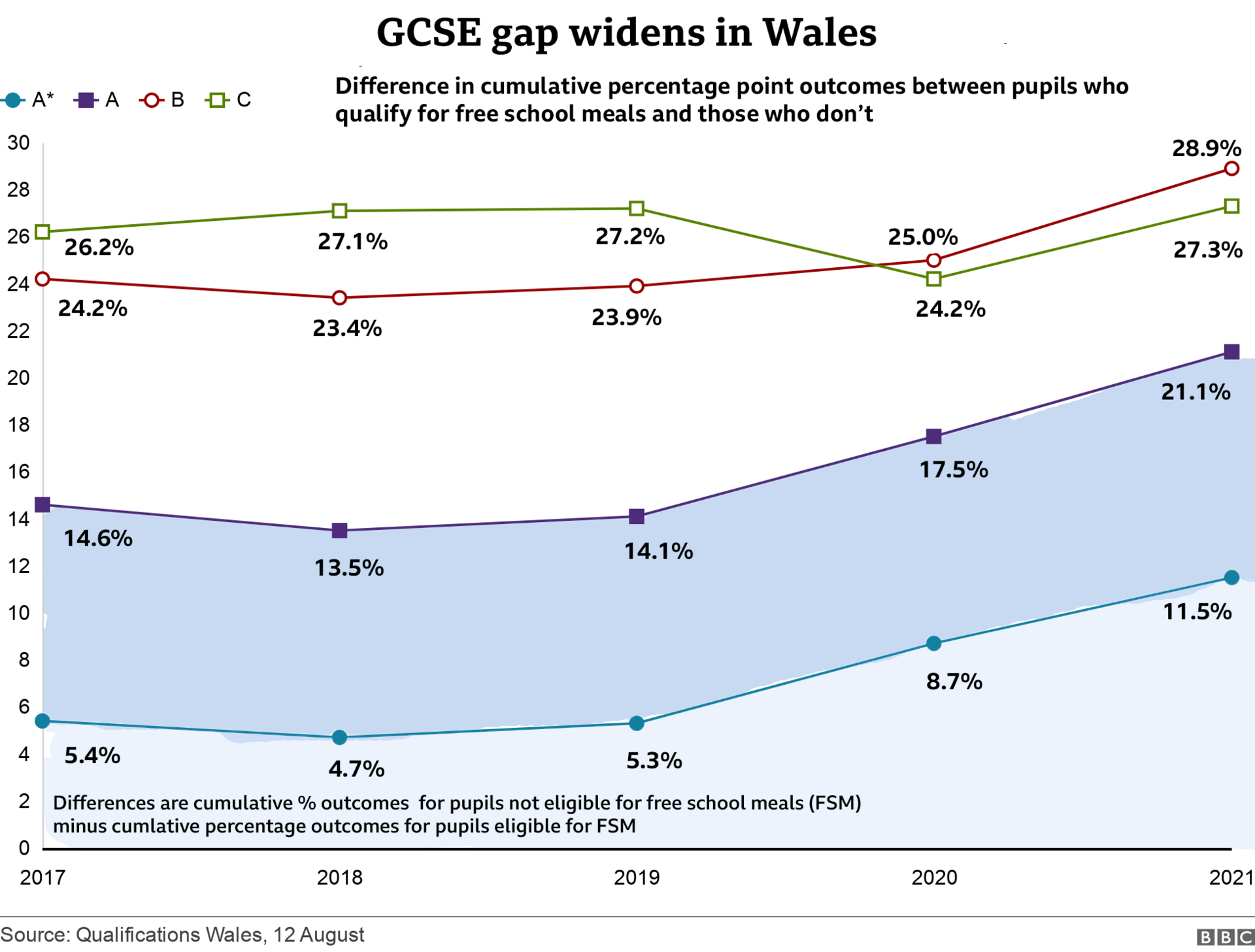
Statistics from this year's GCSE results revealed pupils on free school meals were 11.5 percentage points behind those not eligible when it came to getting A* grades.
This has grown by 2.8 percentage points since last year and has widened by 6.2 percentage points since 2019.
The Welsh government launched its renew and reform plan, external for education in June, with a commitment of more than £150m for 2021-22.
Education Minister Jeremy Miles said: "Over the next year, the renew and reform plan I announced a few weeks ago will provide specific funding to support disadvantaged pupils over the coming years because we recognise the impact of Covid hasn't hit people equally as a government we recognise that and need to give additional support to those students who need it most."
What's the picture across the UK?
Results look similar across the UK, showing higher grades achieved compared to pre-Covid levels.
Last year, schools across the UK had to adapt to learning from home and exams were cancelled for many.

Wales uses alphabetic A to G grading system, English exam boards use 1-9 (9 is equivalent to A*) and pupils in Northern Ireland get a combination of both.
Overall in the UK:
Girls moved further ahead of boys - 33.4% of girls' results were 7/A, compared to 24.4% for boys
Northern Ireland had the highest grades
In England, independent schools had biggest increase in top grades - 61.2% at 7/A, compared to 26.1% in comprehensives and 28.1% in academies
Pupils eligible for free school meals slipped slightly further behind
London had most top grades in England, with the north-east the fewest
3,606 pupils got all grade 9s


Related topics
- Published10 August 2021
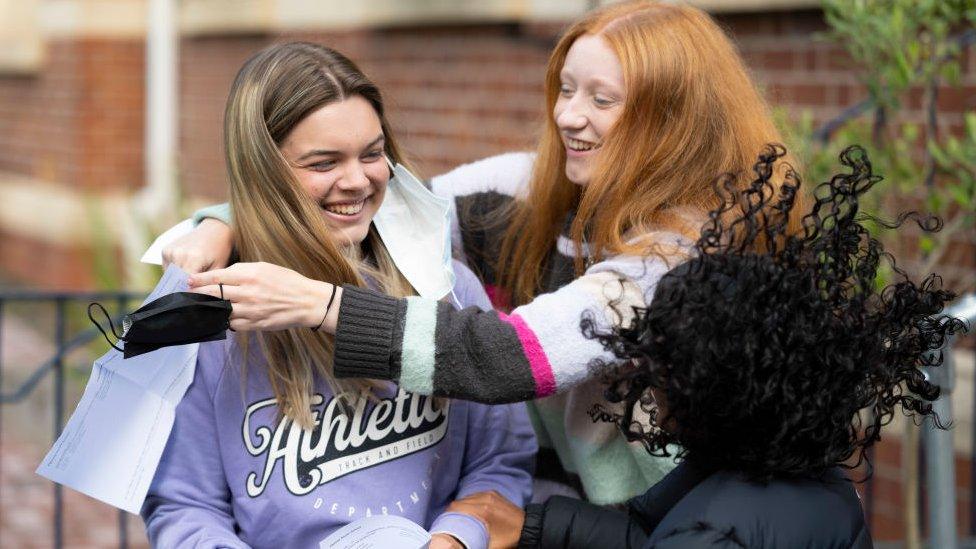
- Published4 April 2021
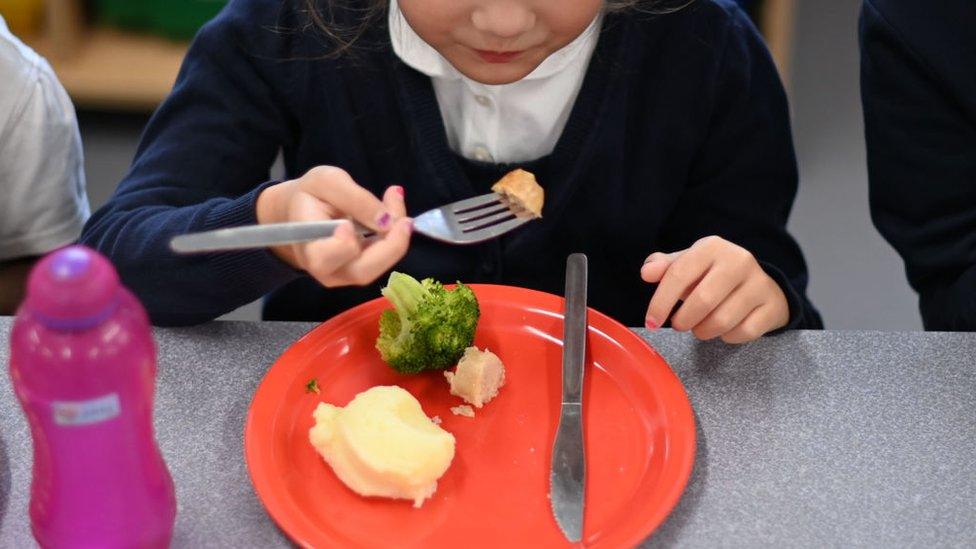
- Published12 August 2021
